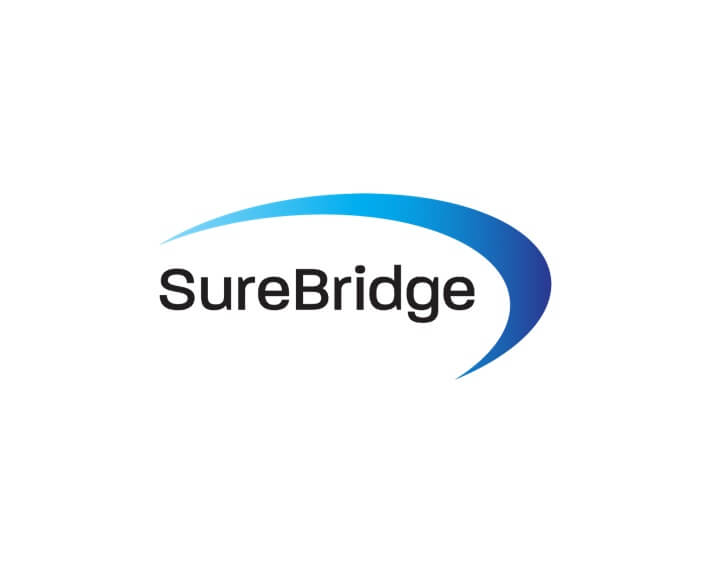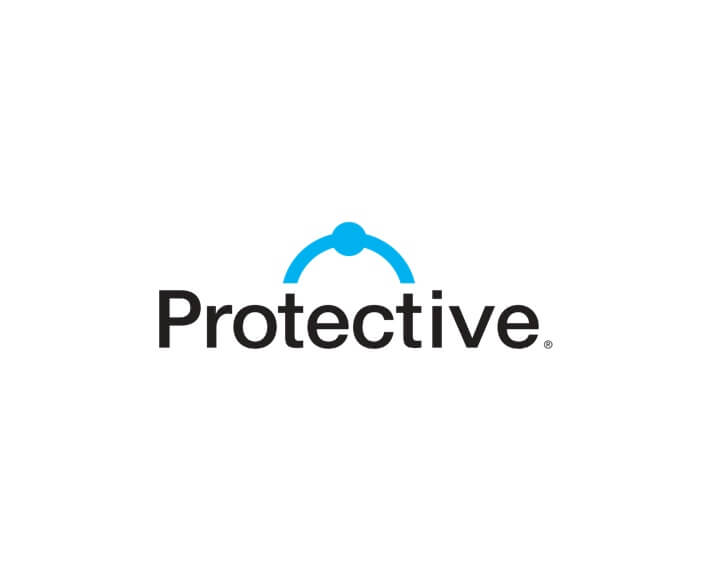Affordable Life Insurance


Reviewed by
Nick Fenske
Licensed Insurance Agent
Table of Contents
- Yes, you can afford to buy life insurance
- What is the most affordable life insurance?
- Most affordable life insurance companies
- How does your insurance classification determine your cost?
- Why life insurance deserves a piece of your paycheck
- How to bring down the cost of your life insurance policy
- So, how do you find low-cost life insurance?
Yes, you can afford to buy life insurance
If you’ve been putting off buying life insurance because you think it’s too expensive, you’re not alone. A study by the LIMRA and LIFE Foundation found that four out of five people said they hadn’t purchased life insurance because they thought they couldn’t afford it. But they also overestimated the true cost of coverage, in many cases by three or four times the actual amount!
While the cost of life insurance varies from one person to the next for a lot of reasons, there’s a very good chance that you can get a term policy for a cheaper price than you think — often considerably less than the monthly cost of cable TV or cell phone service. With the ability to get online quotes you can compare the best companies and find the policy that works for you.
What is the most affordable life insurance?
Accidental death insurance
Regardless of your age, accidental death and dismemberment insurance is by far the cheapest option. There is one caveat, though. This type of insurance only pays if your death is due to an accident. That being said, it is a great alternative if you want some sort of life insurance coverage at the lowest price possible.
Learn more about accidental death insurance
Term life insurance
This is one of the most affordable plans out there. By having the ability to choose the length and coverage amount, you can get a great policy that fits your budget and needs at the time. This offers flexibility and the ability to save money over time.
Learn more about term life insurance
Final expense insurance
Once you reach age 55, term life insurance becomes harder to qualify for. Final expense insurance is a great alternative. While final expense coverage costs more than term life insurance, the application process is much easier. Since the product focuses mainly on seniors, you won’t be qualified the same way a younger individual would. Instead, having mild health conditions is to be expected.
Learn more about final expense insurance
Most affordable life insurance companies
| Insurance type | Company | Our opinion |
|---|---|---|
| Accidental death & dismemberment |  |
Gerber is an excellent provider of whole life insurance, including accidental death. Get up to $250,000 in accidental death coverage. There is no physical, and acceptance is guaranteed. |
| Term life insurance with an exam |  |
Banner Life is a well-established and trustworthy provider of term life insurance. And, their pricing is among the lowest in the industry. |
| Term life insurance without an exam |  |
If you want convenience at the best possible price, Sagicor is your best bet. They offer up to $500,000 in term life insurance without the need for an exam. Plus, their application can be completed online. |
| Final expense insurance |  |
For seniors, Mutual of Omaha is a top choice. They are more health-forgiving than other companies, and their financial history and customer ratings are among the best of the best. |
How does your insurance classification determine your cost?
Insurance companies look at how much of a risk you are when they decide whether to offer you coverage. They take numerous factors into account and put you into one of several classifications they use when calculating rates.
Some of the factors that are used to determine your insurance classification — and ultimately what you’ll pay for coverage — include your:
- Age – The older you are, the more you’ll probably pay.
- Gender – Women tend to have lower premiums than men for similar policies.
- Build – Your height and weight are taken into consideration when assigning your policy class.
- Use of nicotine – If you smoke, you could pay 2-3 times more than a nonsmoker.
- Medical and prescription history – Your personal medical history and that of your family, as well as your history of prescription drug use, will have an impact on your rate.
- Lifestyle – High-risk hobbies like parachuting and quad jumping raise the cost of life insurance.
- Career – Similar to your lifestyle, if your job or profession puts you at higher-than-average risk, you’ll pay a higher-than-average premium.
- Financial history – Expect to have your credit rating checked.
- Driving/arrest record – Reckless driving, DUIs, and other arrests will negatively affect your classification.
- Location – Rates vary from state to state.
Why life insurance deserves a piece of your paycheck
Not everyone needs life insurance. If you’re single and healthy, have no family (including parents) and no debt, and have enough stashed away to pay for your funeral/final expenses — as well as any unexpected medical expenses — you probably don’t have to worry about getting a policy. Not too many of us can check off all of those boxes, though.
Regardless of your age or marriage status, there’s a high probability that someone you know would be affected financially if you were to die unexpectedly. You might have a spouse, children, or parents who would be deprived of your income as financial support, or be expected to pay for certain expenses or debt (for example, a mortgage or college tuition). If someone has co-signed a loan with you (including a student loan), that person would almost certainly be affected if you died before the loan was paid back. If you’re a business owner, do you have partners who would struggle to keep the business going without you?
Provide a back-up financial plan for your loved ones
A life insurance policy can protect the people you care about in any of those scenarios by making sure they’re financially stable. It can also save your family from having to worry about money at a time when they’re emotionally stressed.
How about if you’re not the income provider?
What if you’re not the family breadwinner? What if your “job” is to take care of the home and the children? There’s still a very strong argument to be made for having your own life insurance policy because there’s a dollar value attached to the diverse and necessary work you do. That work is just as important to your family’s welfare as if you worked outside of the home, and arguably even more so.
Surveys by Salary.com suggest that stay-at-home parents could charge well over $120,000 a year for the work they do. Without you, your spouse would need to take on the extra responsibilities you currently handle, or pay someone else to. Having extra funds would help to ease the load in your absence.
What if you have enough assets and don’t need life insurance?
Maybe you’ve decided you don’t need life insurance because you already have enough assets to take care of the people you would leave behind. If that’s the case, here’s something to consider.
How liquid are those assets?
In other words, how quickly could they be converted into cash, if necessary? A life insurance policy would provide funds right away to cover immediate expenses. That means your family wouldn’t have to sell non-liquid assets for a fraction of what they’re worth just to get some fast cash.
There’s another reason to think about buying life insurance sooner rather than later: If you buy coverage when you’re at least relatively young and healthy, you can lock in a cheaper rate than if you wait. The older you get, the more it will cost if you apply for a new policy. Plus, your health status is more likely to change as you age, and that will also drive up the cost of life insurance.
Look, we know it’s really easy to keep putting off buying life insurance. There’s always something that seems to take priority when it comes to your time and your money. And let’s face it. Nobody likes to think about dying. But you don’t really want to think about your family being strapped for cash if you were suddenly out of the picture either, do you? You won’t have to if you take a little time and get a policy. Imagine how good it’ll feel to cross that off of your to-do list!
How to bring down the cost of your life insurance policy
Don’t buy more insurance than you need.
Some insurance companies will have their agents try to convince you to buy far more coverage than you need. They sometimes use a presentation packet called a “needs analysis,” which is often just a way to increase the agent’s commission. The higher the dollar amount of your policy, the more commission the agent receives.
Ethical agents will tell you there’s no magic formula to determine how much life insurance you need. It depends on how much you want to leave for your loved ones.
For many people, a $250,000 term life insurance policy works very well and is quite affordable. Others may want or need a little more.
If you speak to an agent who wants to push you into buying a policy with a certain dollar amount, we strongly suggest getting a second opinion from another independent agent.
Don’t buy riders you don’t need.
This dovetails with what we just stated above. Riders are optional extra coverage you can add when you purchase a policy. Usually, these are an “upsell” that increases the price of the policy — and the agent’s commission.
However, there are two types of riders that can add real value to your policy and are worth considering.
Accelerated benefits rider: Sometimes called “living benefits,” this rider is often included at no additional cost. A policy with this kind of rider can serve as both a life insurance policy and a long-term care policy, because the rider gives you access to the death benefit if you develop a terminal, chronic, or critical illness. It can help your family cover your major medical bills and offset other financial issues while you’re still alive.
American National and American General have some of the best accelerated benefits coverage on the market.
Conversion rider: Many term life insurance policies will give you the option to convert all or part of the policy into a whole life policy before the term expires, without having to undergo more underwriting at the time of the conversion. This rider lets you maintain coverage beyond the end of the term for the rest of your life, as long as you continue to pay the premiums.
The conversion rider is extremely popular, and many insurers provide it at no additional cost.
Stop smoking (or vaping).
It’s no surprise that insurance companies don’t like it when you smoke. Some companies are more lenient when it comes to marijuana use, but most look at the use of any form of nicotine or THC in about the same way.
Although quitting today won’t lower your rates right now, once you’ve stopped using these products for at least 2 years, you may be able to ask that underwriters review your policy.
You can see below the significant difference in costs between a policy for someone who smokes versus someone who doesn’t.
| Coverage | Age | Non-smoker | Smoker |
|---|---|---|---|
| $50,000 | 30 | $9.35 | $16.95 |
| 40 | $11.37 | $27.90 | |
| 50 | $22.88 | $61.58 | |
| $250,000 | 30 | $12.62 | $39.31 |
| 40 | $17.64 | $69.06 | |
| 50 | $38.92 | $165.06 |
Take steps to improve your health.
Like stopping smoking, this is also a no-brainer. The healthier you are, the less risk you pose to the insurance company. The less risk you pose, the lower your rates will be.
Taking steps to improve your health — like losing weight if you need to, or working to get a chronic condition under better control — can help save you money in the long run, even if you currently have a policy.
Pay your premium annually.
Much like the concept of buying in bulk, paying for life insurance by the year can be cheaper. It can save you as much as 10% compared with paying month to month. Also, paying annually helps ensure that you don’t forget to make a payment, which would cause your policy to lapse.
Stack your life insurance policies.
As your life evolves, so should your life insurance. The needs you have in your twenties probably won’t be the same as your needs when you’re in your forties. Your life insurance should reflect those changes.
Being aware of the need to protect your family’s financial security as your liabilities grow is critical, but that doesn’t mean you should buy one large policy to cover everything.
You can stack your coverage with term life insurance to make sure you’re protected and then cancel policies when they’re no longer needed. Here’s an example:
- Joe buys a $250,000 term life insurance policy to cover five years of income if he dies.
- Joe and his wife buy a $180,000 house and then purchase a 30-year level term life policy to cover the house in case he dies before the mortgage is paid.
- Joe buys a new car and purchases another 10-year term life insurance policy while he’s making payments on it to ensure that it’s paid off if he dies.
Lower your risk profile.
Insurance companies check with the DMV and the credit bureaus to see if you’re a good risk. If you’ve had a lot of accidents or you’ve filed for bankruptcy (or have a low credit rating), you can expect to pay a higher premium. The same is true if you have a high-risk occupation or regularly engage in high-risk hobbies, like skydiving, motocross, or hunting.
So, how do you find low-cost life insurance?
Some people find the thought of buying life insurance overwhelming. We’ll admit that the many options available when shopping for a policy can be confusing, especially for people who aren’t familiar with the various types of insurance and the process it takes to actually get coverage.
That’s why we try to make it as easy as possible to get the right policy at the right price, even if you’re brand new to all of this. Our friendly agents are more than happy to help you understand anything that might seem confusing — and you’re under no obligation whatsoever. The way we see it, the more knowledge you have the better you’ll be able to make a decision you’ll be satisfied with.
Here are our recommendations:
Start with a free quote.
While a quote won’t guarantee the cost of a policy, it will give you a general idea of what you might expect to pay for coverage. We recommend looking for a term life policy, at least to start with. For most people, term life is the most affordable life insurance.
You can use our calculator to get a quick estimate.
Talk with an independent agent.
Getting a free quote might point you to a policy that fits your needs at a price you can live with. But to be sure you’re getting the best coverage and the best price, it’s always a good idea to talk with an independent, licensed agent at a company that represents multiple insurers.
Some people shy away from having this conversation because they don’t want to be hounded with sales calls or pressured into buying something they don’t want or need. A reputable agent shouldn’t pressure you at all.
A good agent will talk with you about your life insurance needs and explain the various types of products (e.g., term life, whole life, and final expense), as well as the underwriting process. If you decide you’re ready to look into getting coverage, he or she can work with you to find the best and most affordable policy for your circumstances and budget.
It doesn’t cost you anything to talk with an independent agent, so why not take advantage of this resource?
The reason we emphasize working with an independent agent is simple: Agents who work for a specific company (like the ones you see in TV commercials) can only offer the policies their company sells. An independent agent, on the other hand, works with a variety of insurers and can shop around to find the policy that works best for your needs and budget.
Working with an independent agent also saves you time, since you don’t have to go to the trouble of contacting individual insurance companies on your own to compare coverage and rates. Plus, you won’t wind up with multiple insurers sending you emails and calling to see if they can sell you a policy.
Check the online reviews.
Before you choose an insurance company, do a search online for company reviews and complaints. See if the company has a good reputation among customers that have already purchased a policy.
Sometimes cheap life insurance really is a bargain, as long as it offers the right amount of coverage. Other times, the old saying “you get what you pay for” holds true. It’s not hard to find out what other people have experienced when doing business with a particular insurer, and it can help you avoid making a costly mistake.
Checking with the Better Business Bureau and Google Business is a good start. Also, there are websites that are dedicated to conducting life insurance company reviews. They provide the positives and negatives you can expect to experience with a given insurance company.
You can also check to see if complaints have been filed against a particular insurance company with your state department of insurance. The National Association of Insurance Commissioners website offers a searchable database.
If the insurance company finds out that you’ve been less than honest, you could end up paying the price — in your premium. Or, if a claim is filed down the road, the insurer could legally refuse to pay out the funds that you or your beneficiaries were counting on.
See what you qualify for by answering some health questions.










